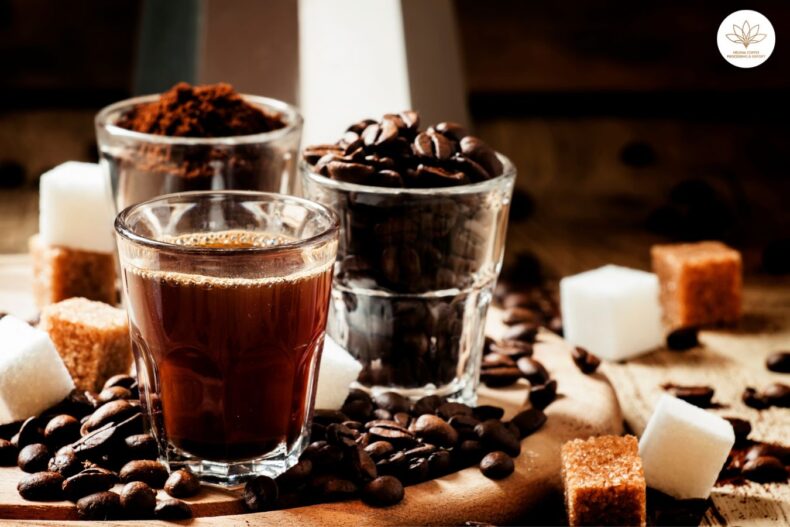
Physicochemical Characteristics Of Water – Water is a molecule made up of one oxygen and two differentially charged hydrogen atoms (H2O), resulting in an unequal distribution of electrical charge (see Fig. 16.1), which is known as polarity.
Water is an excellent solvent for polar substances due to its polar nature, as seen during coffee extraction. It, on the other hand, barely dissolves nonpolar molecules like oils and fats, which account for more than 10% of the weight of roasted coffee.
The solubility of nonpolar substances is considerably increased under high pressure and/or high-temperature extraction conditions, such as espresso and Moka pot, or during long contact durations, such as French press.
Water’s polarity also causes a phenomenon known as self-dissociation, in which a proton is transferred from one water molecule to another. This easily brings us to pH, which is computed as the negative logarithm of proton concentration, with the pH decreasing as the proton concentration increases pH 6 corresponds to a concentration of protons in the water of 106 mol/L, for example.
The concentration of protons reduces by a factor of 10 for every increase in pH value of one unit (1) and vice versa. Pure water has a pH of 7, however, this is only true at 25 degrees Celsius. Let’s find out with Helena Coffee Vietnam.
Carbon dioxide and carbonic acid are two types of carbon compounds
Specific acidity can impart a fresh and vibrant sensation to the cup, which is a hallmark of some well-known specialty coffee origins. An acid is a chemical capable of giving a proton in chemistry. Carbonic acid is a particularly important acid in water and coffee (H2CO3).
It’s crucial to comprehend the varied qualities of water concerning coffee. The applicable parts of this section will be examined later in Sections 3.4, 4, and 6. 2.
This section establishes the groundwork for understanding how the various carbonate species are related to one another. Carbon dioxide (CO2) is naturally dissolved by water, and roasted coffee is another key source of CO2.
CO2 is produced during roasting (up to 2% of the weight of freshly roasted coffee is captured CO2) and then released during extraction. Carbonic acid (H 2CO3) is formed when carbon dioxide is dissolved in water.
It is a weak acid that dissociates into hydrogen carbonate HCO3 plus one proton (H). The proton released into the water causes the water to become more acidic, lowering the pH.
The hydrogen carbonate HCO3 still has a second proton that it could release; however, this only happens at pH values above 8.3, resulting in a doubly charged carbonate ion CO32 . Eq. (16.1) summarizes the chain of chemical reactions that extends from carbon dioxide dissolved in water (left) through to a carbonate ion that has released two protons (right):
CO2 þ H2O$H2CO3 $HCO3 þ Hþ $CO32 þ 2 Hþ


